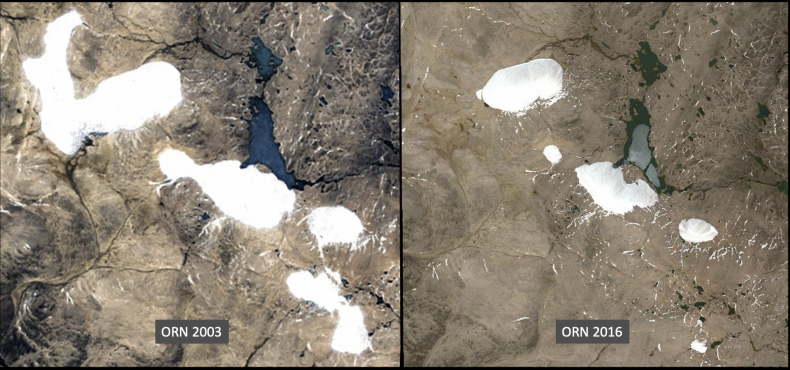The author(s) will give a talk
Episodic cryosphere expansion in Arctic Canada during the Common Era reinforced by repeat dating of entombed plants and supported by climate model simulations
1 University of Colorado
2 WHOI
3 INSTAAR
4 INSTAAR
5 University Wisconsin Madison
6 University of Iceland
Portions of most small ice caps in low-relief Arctic landscapes remained cold-based since their inception during the Holocene. As a result, they preserve in situ tundra plants that were killed as ice expanded across vegetated landscapes. As summers warmed in recent decades, ice caps in the Eastern Canadian Arctic have receded rapidly, typically 10 to 20 m a-1, exposing entombed plants.
In an earlier study we reported 37 radiocarbon dates on in situ dead moss collected at the ice edge in 2005 from two plateau ice complexes on northern Baffin Island. Tight clustering of those ages indicated an abrupt onset of the Little Ice Age around 1280 and 1450 CE, coincident with episodes of major explosive volcanism.
We resampled those ice complexes in 2018 and 2019, by which time they had receded 150 to 250 m. We obtained 59 new radiocarbon dates on ice-edge in situ moss collected at the current ice margins. The new dates cluster in the same time windows as the earlier age clusters, but contain more ages from early in the Common Era. Relict ice from earlier Neoglacial ice expansions preserved beneath younger ice growth is apparent in imagery and in the ages of entombed plants, indicating incomplete past ice recession and subsequent reglaciation.
The composite probability density function of those 105 calibrated ages on entombed plants are restricted to three time windows: 335 ± 95 yr CE, 885 ± 110 yr CE, and a large cluster between 1215 and 1485 CE with peaks ~1285 and ~1440 CE. These three time windows define times of widespread cryosphere expansion coincide with the three most significant decreases in mean summer surface air temperature for the Baffin-Greenland region in a 2000-year CESM-2 simulation, enhanced by explosive volcanism, suggesting primary forcing from both declining summer insolation and positive feedbacks on cooling resulting from explosive volcanism.

Fig 1.
The Orion Ice Complex (unofficial name) at about 800 m asl on northernmost Baffin Island, Arctic Canada; ice caps occupy about 15 km length in the 2003 image. Ice-entombed plants were collected around all but the southernmost ice caps in 2005; 2018 collections were located as close to orthogonal to the 2005 ice margin as possible. Digital Globe imagery.